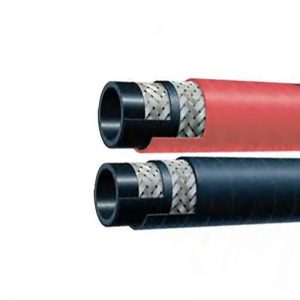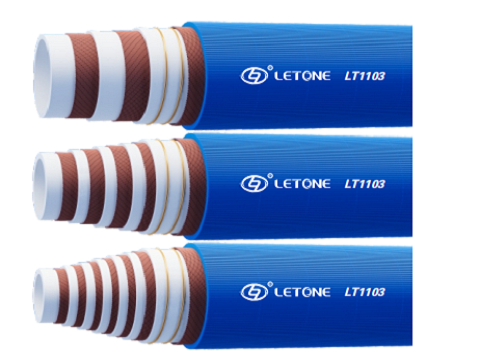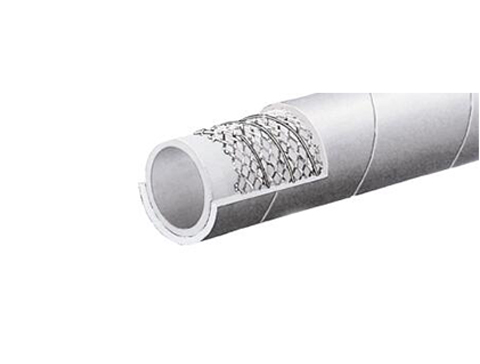In modern industry, steam high-pressure pipes are an indispensable component of steam conveying systems. Its main function is to efficiently transport high-temperature and high-pressure steam, which is widely used in various fields such as power, chemical, pharmaceutical, and food processing. With the continuous advancement of technology, the performance and quality of heat-resistant steam pipes are also constantly improving to meet the high demand for steam transportation in different industrial applications. This article will explore in detail the characteristics, material selection, application examples, and maintenance precautions of steam high-pressure pipes, helping readers better understand this important pipeline component.
1、 Basic concepts of steam high-pressure pipes
High pressure steam pipes are mainly used to transport steam with a pressure exceeding 0.6 MPa (6 bar). The design and manufacturing of such pipelines must meet certain standards to ensure safety and reliability in high-temperature and high-pressure environments. Steam high-pressure pipes are generally made of high-temperature resistant materials, capable of withstanding temperatures up to 180 ℃ and suitable for various industrial applications.
2、 Material selection for heat-resistant steam pipes
The material selection of heat-resistant steam pipes is crucial for their performance. The commonly used materials are:
1. Carbon steel: commonly used for low to medium pressure steam transportation, with good strength and corrosion resistance, but limited high temperature resistance.
2. Alloy steel: including Cr Mo alloy steel, suitable for high temperature and high pressure environments, with excellent mechanical properties and oxidation resistance.
3. Stainless steel: used to resist corrosion and high temperature environments, suitable for the food and pharmaceutical industries.
4. Plastic composite pipes: used for some special non corrosive steam, lightweight and easy to install.
3、 Design standards for steam high-pressure pipes
The design of high-pressure steam pipes needs to comply with national and industry standards, such as GB150 Boiler and Pressure Vessel Design Standards and ASME B31.1 Power Pipeline Standards. These standards specify the materials, thickness, connection methods, and testing requirements for pipelines to ensure their safety and efficiency during operation.
In the design process, it is necessary to first confirm the working pressure and temperature, and select appropriate pipeline specifications and materials according to the corresponding standards. Then, design according to the connection method used (such as flange connection, welding, or threaded connection) for ease of installation and maintenance.
4、 Application examples of steam high-pressure pipes
1. Power industry: In power plants, high-pressure steam pipes are used to transport the generated high-pressure steam and drive steam turbine generators to generate electricity. These pipelines need to withstand extremely high temperatures and pressures, so they are usually made of alloy steel and strictly monitored to ensure safe operation.
2. Chemical industry: In the process of chemical production, it is often necessary to use high-temperature steam for reaction or heating. In this process, the performance of heat-resistant steam pipes directly affects production efficiency and safety.
 3. Food processing: In the food industry, steam high-pressure pipes are not only used for heating and distillation, but also for cleaning equipment. Due to food safety requirements, such pipelines are generally made of stainless steel material and undergo special treatment to prevent contamination.
4. Pharmaceutical industry: Similar to food processing, the pharmaceutical industry has extremely high hygiene requirements, and the selection and design of steam pipelines need to comply with GMP standards to prevent any risks that may affect drug safety.
5、 Maintenance and upkeep of high-pressure steam pipes
Regular maintenance and upkeep are essential to ensure the normal operation of steam high-pressure pipes. Here are some maintenance precautions:
1. Regular inspection: The welding points, connections, and surfaces of the pipeline should be inspected regularly, and any problems found should be promptly addressed.
2. Insulation treatment: High temperature steam pipelines need to be insulated to reduce heat loss and minimize the impact of external environment on the pipeline.
3. Water hammer protection: Steam pipelines need to be equipped with water hammer protection devices to prevent water hammer from causing damage to the pipeline.
4. Corrosion monitoring: Regular monitoring of pipeline corrosion should be conducted, and surface treatment or material replacement should be carried out as needed.
5. Training operators: Operators should undergo training, master the safety operating procedures of steam pipelines, and regularly participate in safety drills.
6、 Future prospects
With the continuous advancement of technology, the design and materials of steam high-pressure pipes will be further optimized. The application of intelligent monitoring technology will enable real-time monitoring of pipeline operation status, reducing production losses caused by equipment failures. At the same time, the continuous improvement of environmental regulations will also promote the design of heat-resistant steam pipes to pay more attention to environmental protection and energy efficiency, in order to meet the needs of sustainable development.
In summary, high-pressure steam pipes and heat-resistant steam pipes play a crucial role in various industrial fields. By gaining a deep understanding of its material selection, design standards, application examples, and maintenance strategies, its efficiency and safety can be effectively improved, providing strong support for the development of the enterprise.
3. Food processing: In the food industry, steam high-pressure pipes are not only used for heating and distillation, but also for cleaning equipment. Due to food safety requirements, such pipelines are generally made of stainless steel material and undergo special treatment to prevent contamination.
4. Pharmaceutical industry: Similar to food processing, the pharmaceutical industry has extremely high hygiene requirements, and the selection and design of steam pipelines need to comply with GMP standards to prevent any risks that may affect drug safety.
5、 Maintenance and upkeep of high-pressure steam pipes
Regular maintenance and upkeep are essential to ensure the normal operation of steam high-pressure pipes. Here are some maintenance precautions:
1. Regular inspection: The welding points, connections, and surfaces of the pipeline should be inspected regularly, and any problems found should be promptly addressed.
2. Insulation treatment: High temperature steam pipelines need to be insulated to reduce heat loss and minimize the impact of external environment on the pipeline.
3. Water hammer protection: Steam pipelines need to be equipped with water hammer protection devices to prevent water hammer from causing damage to the pipeline.
4. Corrosion monitoring: Regular monitoring of pipeline corrosion should be conducted, and surface treatment or material replacement should be carried out as needed.
5. Training operators: Operators should undergo training, master the safety operating procedures of steam pipelines, and regularly participate in safety drills.
6、 Future prospects
With the continuous advancement of technology, the design and materials of steam high-pressure pipes will be further optimized. The application of intelligent monitoring technology will enable real-time monitoring of pipeline operation status, reducing production losses caused by equipment failures. At the same time, the continuous improvement of environmental regulations will also promote the design of heat-resistant steam pipes to pay more attention to environmental protection and energy efficiency, in order to meet the needs of sustainable development.
In summary, high-pressure steam pipes and heat-resistant steam pipes play a crucial role in various industrial fields. By gaining a deep understanding of its material selection, design standards, application examples, and maintenance strategies, its efficiency and safety can be effectively improved, providing strong support for the development of the enterprise.







